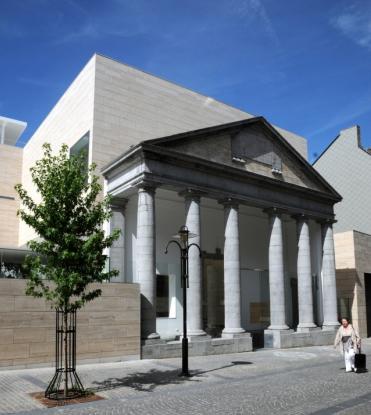M - Museum Leuven

M - Museum Leuven
Leopold Vanderkelenstraat 28
3000 Leuven
Belgium
P 0032 (0)16 27 29 29
The art collection of the City of Leuven, which is managed by the M Museum Leuven, has grown organically from out of an 18th-century room of curiosities. In 1823, the first museum found its quarters on the second floor of the Leuven City Hall. More or less one century later, the collection was moved to the former private residence of the Mayor Leopold Vander Kelen. Thanks to a number of gifts, the generally historical art collection grew into a full-fledged collection that offers an overview of the art production in Leuven and Brabant from the Middle Ages to the present. The conservators enhanced the collection and the expansion of the museum's profile. The emphasis gradually shifted from the historical to the encyclopaedic to the religious. In the 1990's, the municipality was placed in the foreground. Up until 2006, there was a permanent installation of fine and practical arts in the former ‘Hôtel Vander Kelen'. Thorough renovation beginning from the end of 2006 transformed the antiquated museum into a museum of the 21st Century.
During the French occupation (1795-1815), Leuven functioned as an art repository for the confiscated art objects from the cantons of Leuven, Tienen, Diest, Zoutleeuw and for the works of art from the cloisters of Nethen, Florival and ‘s Hertogendaal, and the abbeys of La Ramée and Averbode. Only a part of the works brought into Leuven were taken to Brussels and Paris as planned. A few important Baroque works of art remained in Leuven, in addition to other masterpieces such as the Trinity from the studio of Rogier van der Weyden. Examples of such are the alabaster Saint-Anna Altarpiece by Robert de Nole (1610) from the Celestine cloister of Heverlee and two triptychs by Michiel Coxcie. The collection continues to grow from various gifts in the following years. Thus gifts Professor Van Leempoel two portraits by Michiel Jansz. Van Mierevelt and the painting that shows the interior of the Saint Peter's Church in Leuven by Wolfgang De Smet. The most important gift in the history of the museum, however, is the bequeathal of the conservator Victor De Munter in 1938. The gift of his collection, as well as containing the collection of the former City Archivist Edward Van Even, signals a significant expansion of the collection. By means of this, The Holy Family by Theodoor Van Loon arrives into the collection. In addition, a great corpus with work by Pieter-Jozef Verhaghen, the artist to whom both Van Even and De Munter have devoted much research, is in this manner brought into the fold of the M's collection. In addition to this, via institutional loans the M has at its disposal works of art from artists such as Gaspar de Crayer, Erasmus Quellinus II and David Teniers II.
Leuven is not the city that is immediately associated with the Baroque, but rather more with Late-Gothic sculpture work and the painting of Dieric Bouts. Yet, in Leuven there were also various noteworthy Masters active in the 17th and 18th Centuries. The most prominent are Theodoor Van Loon and Pieter-Jozef Verhaghen. Both are represented in the M Collection, in addition to a number of interesting Masters from Leuven and other towns. From an overview perspective, one can divide the Baroque collection of the M into four categories. First, there is the religious painting from the Contra-Reformation with the works of Ambrosius Francken I, Frans Francken II and Gaspar de Crayer as examples. Next, the M has a collection of cabinet pieces from, among others, Joos de Momper II, Bernaert de Bridt and Benjamin Gerritsz. Cuyp. The 18th-century area of painting is well represented with the large collection of Pieter-Jozef Verhaghen and Balthasar Beschey. A final division consists of the sculptures by Robert de Nole and Anthoni Faydherbe, among others.
Marjan Debaene
CC BY (Creative Commons 4.0)
